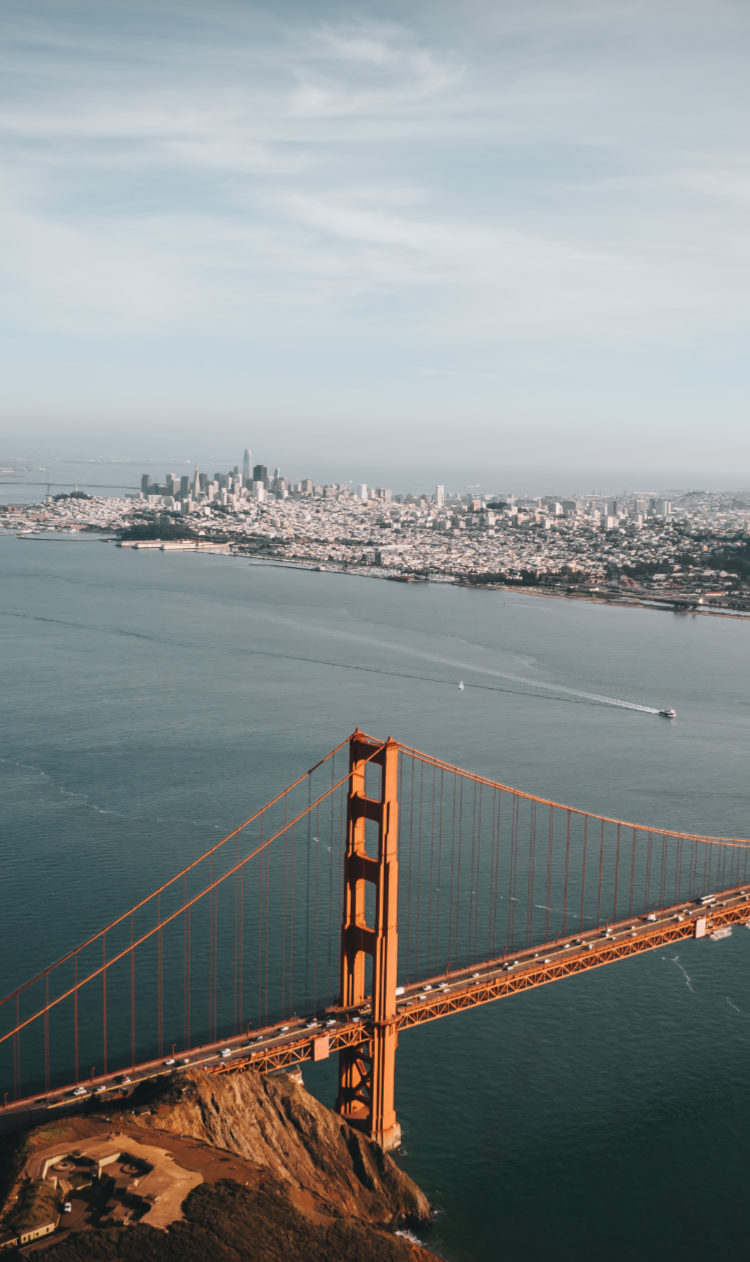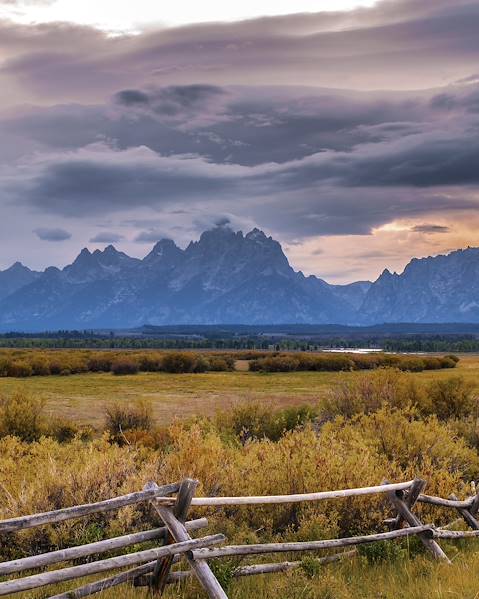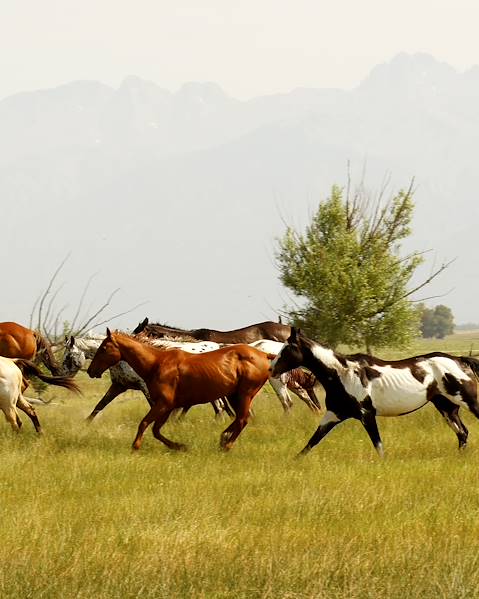Population
346,785,821 inhabitants (2025).
Official language
While not enshrined in law, English is the official language of the US.
Spoken languages
After English, Spanish is the most widely spoken language in America, with around 41 million speakers across the country. America is a land of immigration and ethnic diversity and the languages in use reflect that, with French, German, Chinese and many indigenous languages all spoken.
People
The term ‘melting pot’ couldn’t be more apt when talking about America. Since the first arrivals from Europe in the 16th century, the United States has been a country built on immigration. White Americans form the largest ethnic group at around 72% and the majority of this community are descendants of the first Anglo-Saxon and Germanic immigrants to the US. The Hispanic and Latino communities, of any race, represent around 16% of the population, while Black Americans total around 12%. A rapidly expanding group are the Asian population, who account for around 4% of the country’s ethnic makeup. Native Americans, Alaska Natives, Pacific Islanders and Native Hawaiians are some of the indigenous groups that combined represent around 1% of the US population.
Religion
Religion is an important aspect of American society and freedom of worship is guaranteed within the US Constitution. The reported numbers of Americans holding a religious belief is around 90% and 70% are members of a church. Christianity is the majority religion, made up of 48% Protestants, 23% Catholics and 1.8% Mormons. Minority religions include 2% Jewish, 1% Muslim and many other emerging faiths including Hinduism, Buddhism and Sikhism, which combined account for around 2.5% of the population.
Holiday Schedule
During national holidays, special schedules are usually in place and many banks, post offices and even some shops, museums and attractions are closed. As well as these National Holidays, it’s also worth noting that some major religious holidays are statutory holidays for those communities.
- January 1: New Year's Day.
- 3rd Monday in January: Martin Luther King Jr. Day.
- 3rd Monday in February: President's Day.
- Last Monday in May: Memorial Day.
- July 4: Independence Day.
- 1st Monday in September: Labour Day.
- 2nd Monday of October: Columbus Day.
- November 11: Veterans Day.
- 4th Thursday in November: Thanksgiving.
- December 25: Christmas Day.
While they do not give rise to public holidays, there are a few other events of importance:
- October 31: Halloween.
- February 14: Valentine's Day.
- March 17: St Patrick’s Day.
History
Christopher Columbus, on 12 October 1492, landed on the Americas and he is credited with discovering the ‘New World’ and a new continent. While indigenous groups had already been living there for centuries, in the context of European history, Columbus was the first person to initiate exploration and contact with the region. The first permanent Spanish settlement was established in 1565 in St Augustine, now Florida. In 1607, the first English colony settled in Jamestown, Virginia.
In 1620 the Pilgrim Fathers landed in Cape Cod and founded Plymouth, now Massachusetts. Harvard University was founded in 1636. Slavery began to develop and was legalised in 1650. Some Dutch trading posts of the Hudson Bay were annexed by the British in 1664 and New Amsterdam became New York. By 1733, there were 13 English colonies on the east coast, divided into two groups – Puritan merchants to the north and tobacco and cotton growers in the south. Meanwhile, the French colonisation of Canada and America, called New France, extended across the country and consisted of five vast colonies by 1712.
In 1763, under the Treaty of 1763, the French ceded much of their territory to Britain and Spain, ending the Seven Years War. As British American colonies grew, pressure on those settlements to provide income for the British Empire increased and various taxations were introduced, much to their annoyance. Without representation in British parliament, colonies resisted these taxes and relations between the two sides became fraught. In 1774, colonists formed the First Continental Congress and, the following year, the war for independence from British rule began. The army was under the command of George Washington. Despite English military successes in the war, the Continental Congress declared independence on July 4, 1776.
In October 1781, the British army surrendered at Yorktown, Virginia. The Treaty of Paris put an official end to hostilities in 1783. The constitution was adopted in 1787 and, in 1789, George Washington became the first US president. In the early nineteenth century, the creations of the States continued. In 1803, the USA bought Louisiana from Napoleon. A new war between America and Britain between 1812-1815 was fought over trade. The northern border was permanently installed in 1846 following a war with Mexico, in which the US acquired territory including New Mexico and California.
By 1850, there were 31 states in the Union. Indigenous populations were the victims of the development and they were crushed by sovereignty disputes. The second half of the century was marked by the rise against encroachments and perjurers. The Indian Wars were fought by tribes against the expansion of American territory and the climax came at the Wounded Knee Massacre in 1890, when the US army killed hundreds of Lakota Indians and suppressed the native opposition. What followed was many infringements on the rights and sovereignty of Native American tribes, until the eventual introduction of The Indian Citizenship Act in 1924, recognising the US citizenship of indigenous groups. At the same time, to the east, white tribes fought the bloodiest of wars in North America.
In November 1860, the anti-slavery Republican, Abraham Lincoln, became president. This caused 11 pro-slavery states to secede from the US to become the Confederate States of America (CSA) under the leadership of Jefferson Davis. This separation triggered the American Civil War between northern states and the CSA. In 1861, the CSA attacked and the first part of the war was to their advantage. The tide turned however and in June 1863, the Battle of Gettysburg in Pennsylvania was fought resulting in a number of casualties ¬– it was seen as a major turning point for northern forces. In 1865, confederate states are defeated, slavery was abolished and Lincoln was assassinated. The late nineteenth and early twentieth century were a golden age for the United States. The industrial and commercial development was in full swing and affluent immigrants flooded to the country – 43 million in 1870, 75 million in 1900 and more than 100 million by 1920. The country’s economy became the largest in the world. This status required a higher level of organisation, and competition laws, income tax and labour laws were introduced.
In 1917, America joined World War I and declared war on Germany. Nearly 2 million US troops sealed the defeat of German forces. The US rejected membership to the League of Nations and failed to ratify the Treaty of Versailles. This political isolationism reasserted itself and marked the beginning of cultural expansion and post-war prosperity. In 1929, the crash of the Wall Street stock market started the Great Recession. In three years, industrial output fell by 60%, 100,000 companies went bankrupt and 13 million people became unemployed. In 1933, the new president, Franklin D. Roosevelt, launched the ‘New Deal’ to reboot the economy through a series of interventionist measures.
In 1941, Japanese forces attacked the US fleet in Hawaii’s Pearl Harbour and the US declared war on Japan. Germany declared war on the US, but by 1945 the US effectively ended World War II and caused Germany to surrender following the Japanese nuclear strikes in Hiroshima and Nagasaki. In 1947, the Cold War with the Soviet Union began. The Marshall Plan, an American aid programme to re-establish the economies of Western Europe against communism, was launched and distributed over $10 billion to European countries. In 1950 the US and the UN are drawn into the Korean War at a time when the Cold War was heating up. Senator Joseph McCarthy beckoned the start of McCarthyism – a heightened fear of communist infiltration in American society and politics, which lead to a hunt against public figures.
By 1954, public supported waned and McCarthy was formally censured by the Senate. The struggle for black civil rights began in the early 50s, when segregation was still in place throughout southern states. The movement eventually resulted in the 1964 Civil Rights Act, the 1965 Voting Rights Act, and the 1968 Fair Housing Act. 1955 saw the start of the Vietnam War – a 20-year fight between North and South Vietnam that the US was brutally involved in.
Against this background, the 60s and 70s saw many dramatic moments in American history – the Cuban Missile Crisis in 1962, the assassination of President John F Kennedy in 1964 and Martin Luther King in 1968, Neil Armstrong walking on the moon in 1969, the oil crisis in 1973 and Nixon’s resignation in 1974 following the Watergate scandal. Throughout this time, America aroused both an enthusiasm and criticism unlike any other in the world.
In 1980, Republican Ronald Reagan was elected president. The former actor oversaw the disintegration of the Soviet system and was re-elected in 1984. A brash political attitude was adopted, which continued with the election of George Bush as president. The US were heavily involved in the first Gulf War in 1991 and assisted in expelling Iraqi troops from Kuwait. Meanwhile, the country faced recession from 1989 to 1992 and a social crisis emerged. Voters turned to Democrat Bill Clinton who was elected president in 1992. An attempt to reduce unemployment, inflation and economic deficit was completed in part. The diplomatic and military administration was intense – struggles with Russia, Yugoslavia, Iraq and the signing of the Israeli-Palestinian Agreement in 1993, all form the backdrop.
Having been elected in 2000, George Bush junior is president when the US was hit by a terrorist attack of great magnitude on September 11th 2001. A War on Terror was launched, which included invasions of Afghanistan and Iraq and the defeat of Taliban forces. The US-led Iraq War began in 2003, which resulted in the ousting and death of Iraq leader Saddam Hussein. In 2008, Democrat Barack Obama became the first black president of America.
Policy
The United States is a constitutional federal republic, consisting of 50 states and the Federal District of Columbia. The president is indirectly elected through the United States Electoral College every 4 years. The president’s mandate is renewable only once and the president and vice president are elected simultaneously – they form what is called a ‘ticket’. The president is both the head of state and the head of government. The legislative arm of the US is held by the Congress, consisting of two chambers: the House of Representatives (435 members) and the Senate (100 members). Representatives and senators are elected by direct popular vote in each state.
The number of representatives of a state depends on the population of that state, for example, California, the most populous state, has 53 representatives, while others, such as Delaware and Vermont, have only one. The representative has a mandate of two years. There are two senators per state that serve on the Senate. Their mandate is six years. The Senate is renewed by thirds every two years.
Celebrity
In the US, celebrity culture thrives like nowhere else on the planet and throughout history there have been many legendary American celebrities who have made their mark on the world. There are too many to list, but here are a handful of famous names who have embodied the spirit of America, its myths and history.
Among politicians, presidents Abraham Lincoln (1861-1865) and John F. Kennedy (1961-1963) are some of the best known, while Martin Luther King (1929-1968) is an icon of the Civil Rights Movement – all three figures were assassinated. John D. Rockefeller (1839-1937), Henry Ford (1863-1947) and Bill Gates (born 1955) symbolise America’s incredible success in industry and technology. One of the Founding Fathers, Benjamin Franklin (1706-1790), was a diplomat and revolutionary and linked science to the very birth of the country.
Albert Einstein (1879-1955, naturalised in 1940), embodies the idea of freedom; Neil Armstrong (1930-2012) displayed the cosmic significance of the US. Andy Warhol (1930-1987), an artist of almost mythical proportions, created work that is in itself an overview of the commodification of celebrity culture.
Writers like Ernest Hemingway (1899-1961), Herman Melville (1819-1891), William Faulkner (1897-1962) and Jack Kerouac (1922-1969), were icons of their time and pioneers of literature. As for American music: Louis Armstrong (1901-1971), Ray Charles (1932-2004), James Brown (1928-2006), Frank Sinatra (1915-1918), Johnny Cash (1932-2003), Dolly Parton (born 1946), Elvis Presley (1935-1977), Bob Dylan (born in 1941) are just some of the most renowned.
In film, Charlie Chaplin (1889-1977) and Walt Disney (1901-1996) are some of the best-known creators, while the star-studded Hollywood Walk of Fame features some of the biggest actors of all time. Mae West (1893-1980), John Wayne (1907-1979), Marilyn Monroe (1926-1962), James Dean (1931-1955), Marlon Brando (1924-2004) Clint Eastwood (born 1930) are just a small selection of legendary figures.
As for sport, Baseball player Joe di Maggio (1914-1999), boxer Cassius Clay (1942-2016), swimmer Mark Spitz (born 1950) and athlete Jesse Owens (1913-1980), have all ignited the imaginations of fans around the globe throughout history.
Taxes
To avoid an unpleasant surprise at the cash desk on American holidays, it’s useful to know that except for fuel and some food products, prices in the US are always displayed without tax. So a product may say one thing on the price tag, but the reality is altogether different when you go to pay. These taxes are fixed by individual states, sometimes by municipalities, and amounts vary widely.
Good manners
Americans are known for their overly friendly and welcoming nature – don’t be surprised by the astonishing ease they’ll say hello to you in the street or elsewhere, even if they don’t know you. The question “how are you today?” is the US equivalent of a greeting and “have a nice day” is a normal goodbye. Patriotic price is an intrinsic part of culture, that and the imperial system – America is one of only three countries in the world not to adopt the Metric system, so brush up on pounds, miles and Fahrenheits before your stay.
Souvenirs
In America, shopping is a national pastime – from flea market bargains and department store luxuries to antique treasures and pawned gems, there’s something to tickle the fancy of every visitor. Indigenous handicrafts are beautiful and available at a price – when they’re genuine and signed by the artist they can be costly. Blankets, jewellery, pottery and baskets are just some of the incredible traditional wares on offer. Electronic equipment, clothes and sporting goods are all available at attractive prices. Various factory outlets litter the outskirts of the cities and are filled with bargains. And the mecca of commercialism, the mall, offers an array of retail outlets to satisfy every possible shopping need.
Food
While food in America has historically been overlooked in the culinary arts, in the last 50 years the country has upped the ante and its food scene is excellently vast and incredibly varied. From delicious barbecue pulled pork sold from roadside shacks to fresh fish caught that day and the best and biggest burgers you can imagine – it’s possible to eat like royalty every day of your American stay. The ethnic diversity of the US population is displayed in the array of dishes on offer, from independent restaurants and street vendors to fast food chains and fine dining establishments. For a true slice of American life, head to a diner in the morning and tuck into a classic breakfast of pancakes and waffles, maple syrup, bacon, eggs and coffee – the perfect fuel for anyone on a US road trip.
Drink
The United States is a country of sodas – generally very sweet and sugary although ‘light’ versions of popular drinks are popping up all the time. Coca Cola, the emblematic drink of America, was invented in 1886 by John S. Pemberton in a small pharmacy in Atlanta, Georgia, and is as central to American culture as baseball or Elvis. As well as soda, you’ll find iced tea, vegetable and fruit juices. Before approaching the liquor department, grab your ID – the legal drinking age is 21 and being asked to provide proof of age before the sale of alcohol is common. Beer is the most popular alcoholic drink and it’s usually served bottled and very cold.
Californian wines now enjoy a well-established reputation and most come from French grape varieties. The Zinfandel grape gives an exclusively American wine. Along with Scotland and Ireland, the States are also a major producer of whiskey. Among different varieties, Bourbon is key – distilled in Kentucky, which used to be called Bourbon County, it contains at least 51% corn and is characterised by an amber color and a naturally caramelised taste.
















